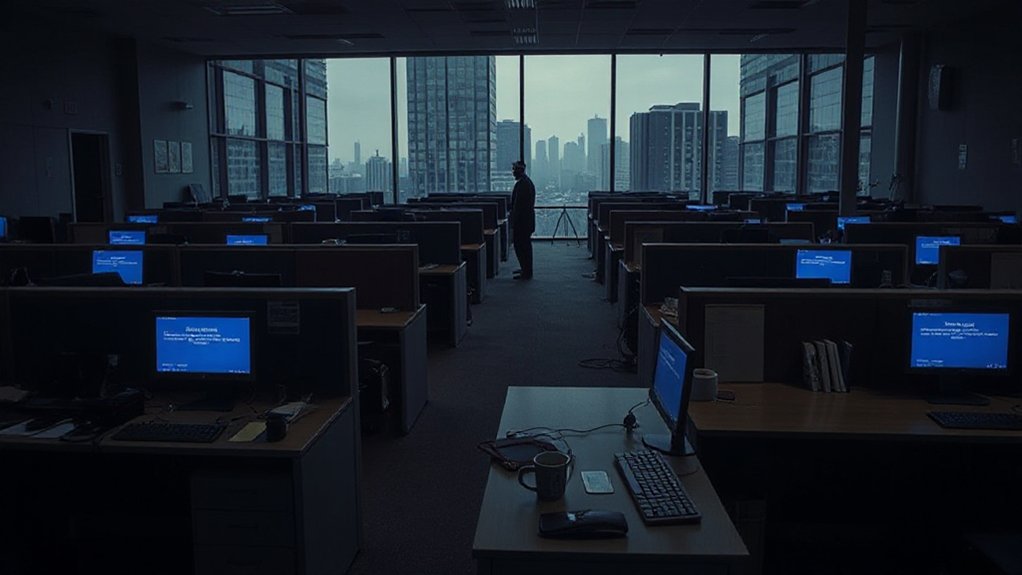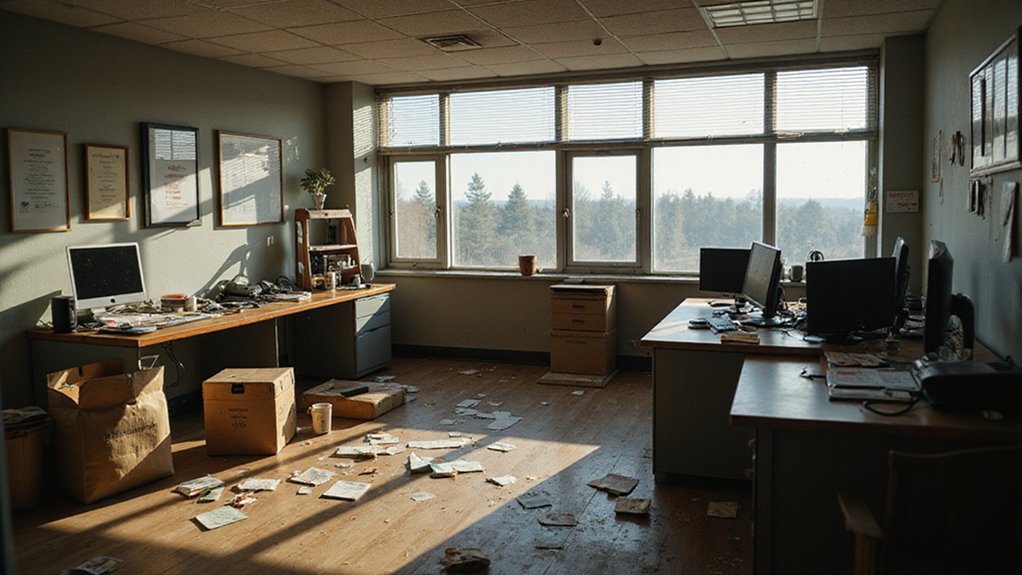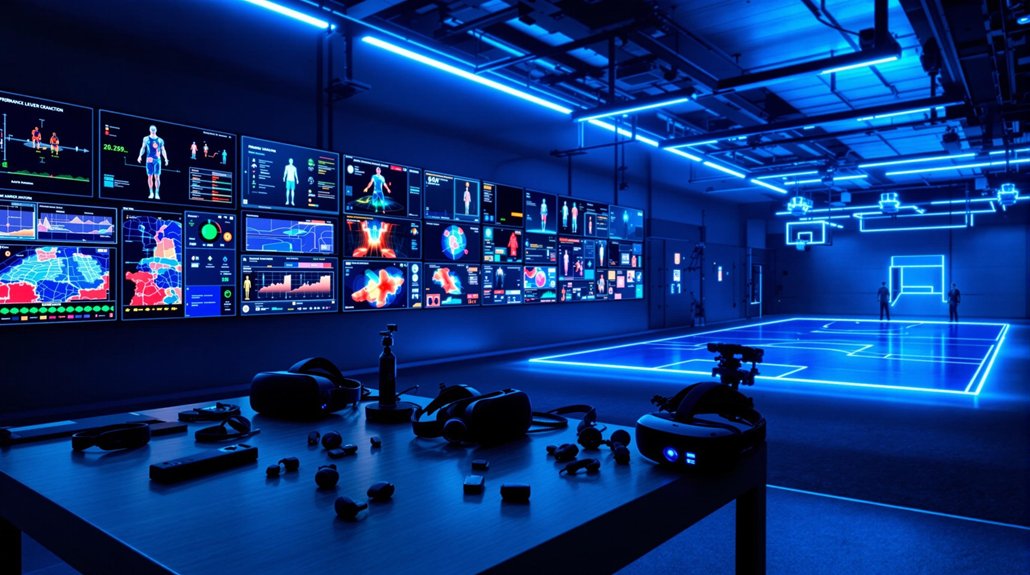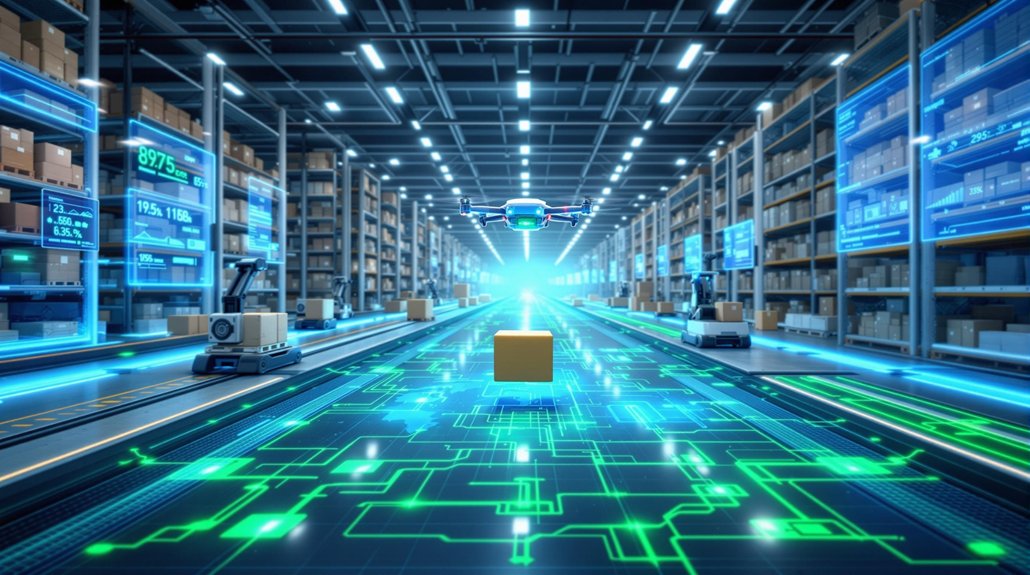Nearly every aspect of modern life is being transformed by artificial intelligence‘s meteoric rise. The numbers don’t lie. We’re looking at a global AI market exploding from $638 billion in 2025 to a staggering $3.6 trillion by 2034. That’s not growth—it’s a transformation happening in fast-forward.
AI isn’t just growing—it’s rewriting our future at breakneck speed, from billions to trillions before we blink.
Businesses aren’t just dipping their toes in the AI waters; they’re diving headfirst. A whopping 89% of small businesses have already integrated AI tools. Why? Because they work. Because they’re fast. Because everyone else is doing it. The classic FOMO-driven corporate stampede, but this time with algorithms.
The job market? Completely reshaping before our eyes. By 2025, 97 million people will work in AI. That’s an entire country’s worth of workers building, maintaining, and babysitting the machines that are—ironically—designed to replace human labor. Talk about job security. Customer service positions have been identified as most vulnerable to automation as companies rapidly deploy AI solutions across customer-facing operations.
Healthcare providers are letting AI read your X-rays (38% and counting). Autonomous cars from Waymo and Baidu are shuttling hundreds of thousands of passengers weekly. Netflix is making an extra billion dollars annually just by having AI tell you what to watch next. Must be nice.
Meanwhile, regulators are frantically trying to catch up. Legislative mentions of AI have increased ninefold since 2016. Too little, too late? Probably. The technology is evolving faster than bureaucrats can type “committee hearing.”
The real surprise? We’re measuring AI progress in months, not years. Benchmark scores are skyrocketing. New systems emerge weekly. The technology’s capabilities double while politicians debate whether it needs oversight.
We need thorough impact assessments now—yesterday, actually. Not just for the jobs that will vanish or the privacy we’re surrendering, but for the entire social fabric being rewoven by algorithms most people don’t understand. The shortage of skilled professionals in AI technology fields represents a critical bottleneck as demand for expertise vastly exceeds the available talent pool. About 16% of all American jobs are expected to be replaced by AI within the next five years, creating an urgent need for workforce transition strategies.
The AI train has left the station, is accelerating exponentially, and we’re all passengers whether we bought tickets or not.
References
- https://www.precedenceresearch.com/artificial-intelligence-market
- https://explodingtopics.com/blog/ai-statistics
- https://www.teneo.ai/blog/ai-ascendancy-unveiling-top-ai-statistics-and-trends-for-2025
- https://hai.stanford.edu/ai-index/2025-ai-index-report
- https://ventionteams.com/solutions/ai/report









